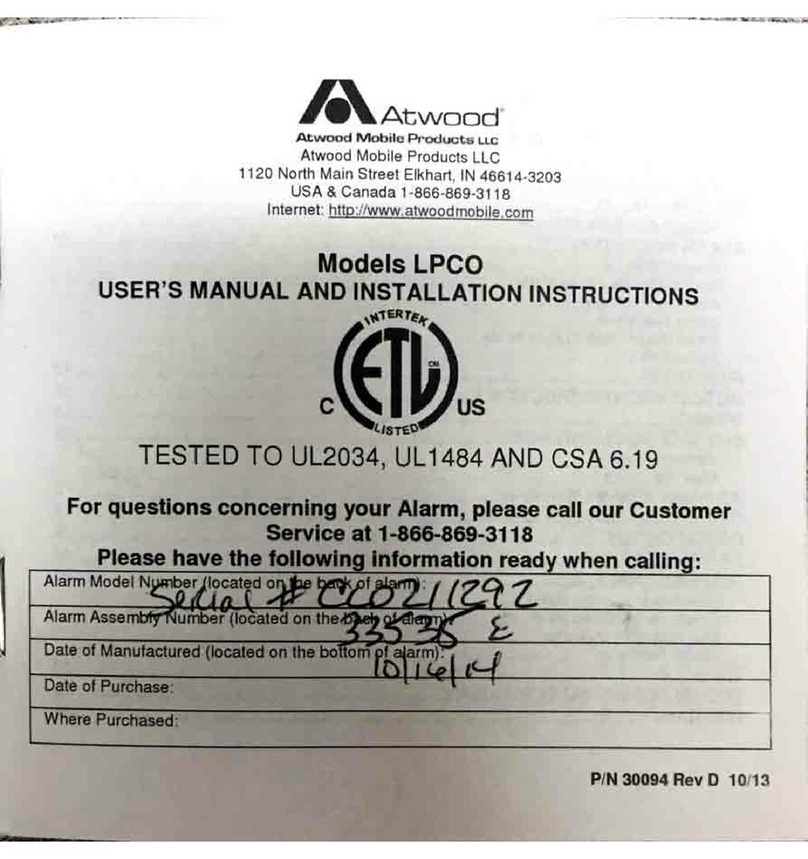CARBON MONOXIDE AWARENESS............................................................................ 3
LIQUEFIED PETROLEUM GAS AWARENESS ............................................................ 4
ACTIVE ALARM PROCEDURES................................................................................... 6
TESTING ......................................................................................................................... 8
MODEL DESCRIPTION .................................................................................................. 9
SPECIFICATIONS........................................................................................................... 9
POWER CONSERVATION MODE.........................................................................................10
ALARM OPERATION ................................................................................................... 10
Power Off Mode.....................................................................................................................10
Normal Gas Detection Mode ................................................................................................10
Alarm Active Mode................................................................................................................11
Alarm Test Mode ...................................................................................................................11
Alarm Reset / Stabilization Mode.........................................................................................11
Fault Mode.............................................................................................................................11
FUNCTIONS.................................................................................................................. 12
INSTALLATION INSTRUCTIONS ................................................................................ 13
WIRING.......................................................................................................................... 15
SURFACE MOUNTING BOX........................................................................................ 16
Surface Mounting..................................................................................................................17
Flush Mounting .....................................................................................................................18
AC Power Adapter Mounting...................................................................................... 19
OPERATING INSTRUCTIONS ..................................................................................... 19
DETECTOR TEST......................................................................................................... 19
LP GAS DETECTION.................................................................................................... 19
POWER MANAGEMENT.............................................................................................. 20
Low Power Warning Mode ...................................................................................................20
Power conservation Mode: ..................................................................................................21
Low Power Alarm Mode: ......................................................................................................21
Power Failure ........................................................................................................................21
End of Life .................................................................................................................... 22
TROUBLESHOOTING QUICK-GUIDE......................................................................... 22
WARRANTY.................................................................................................................. 25




























